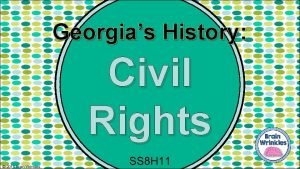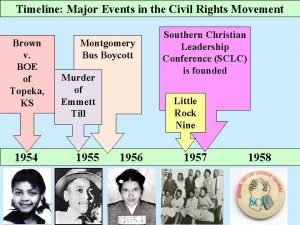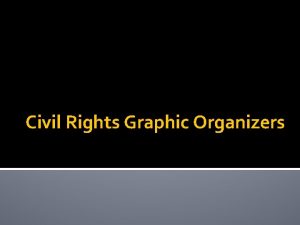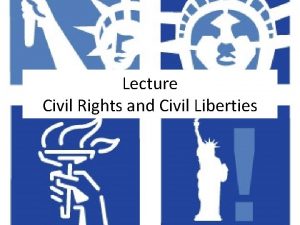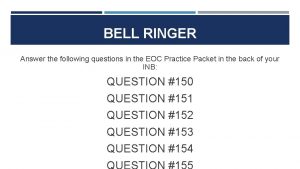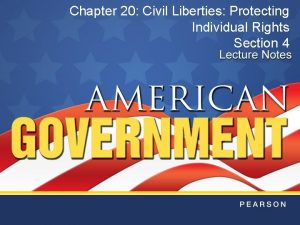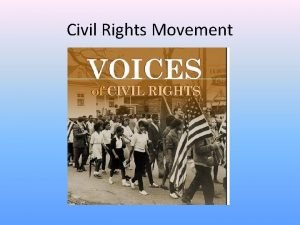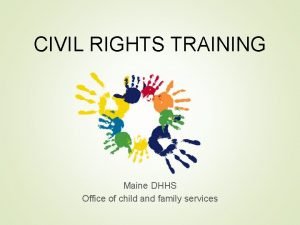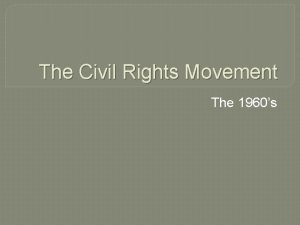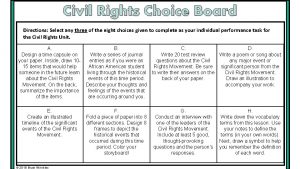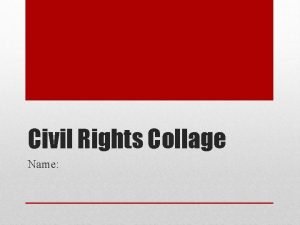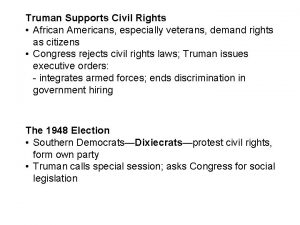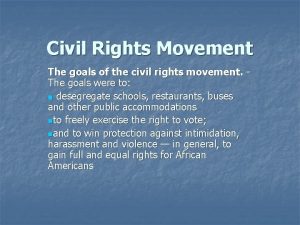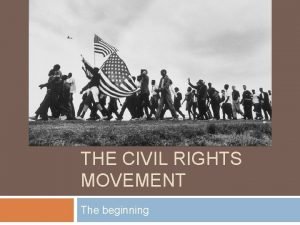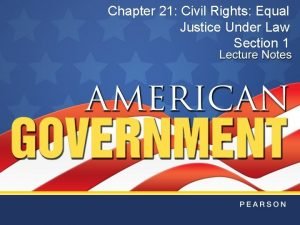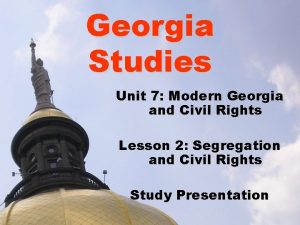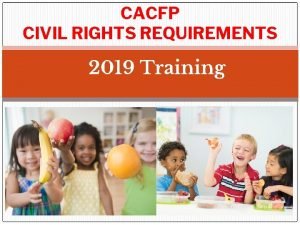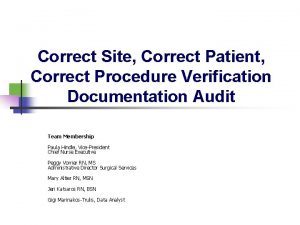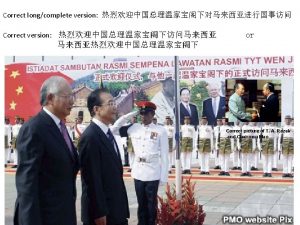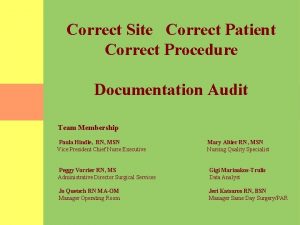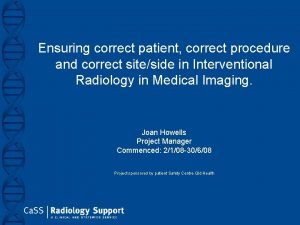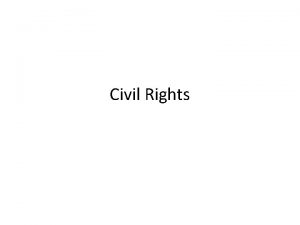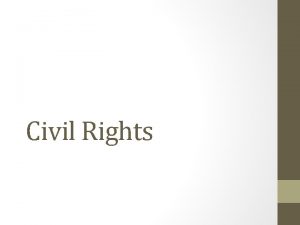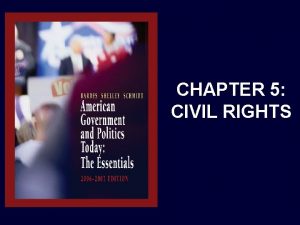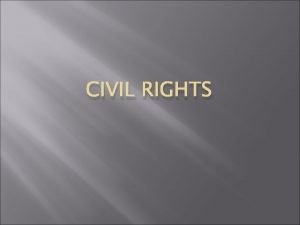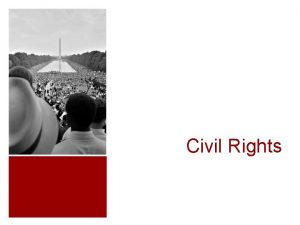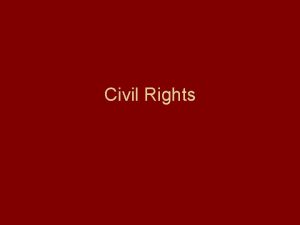CIVIL RIGHTS Overview Civil Rights seek to correct




























- Slides: 28

CIVIL RIGHTS

Overview • Civil Rights seek to correct for unequal rights for minorities in the original constitution. • Despite 1964 Civil Rights Act, unequal treatment remains a challenge. • Affirmative Action, which goes beyond equal opportunity, faces resistance

What Are Civil Rights? • Laws and policies intended to redress historical inequalities – Efforts under the equal protection clause of the 14 th Amendment

Civil Rights Distinguished From Civil Liberties • • • Civil Liberties: individual rights CR: group rights Civil Liberties: emphasize liberty Civil Rights: emphasize equality Civil Liberties: limit government action Civil Rights: demand government action

Early Constitutional History • 3/5 compromise • Fugitive slave law • Slave trade provisions of Constitution – Framers hoped slavery would just wither away. – By 1850, monetary value of slaves exceeded monetary combined value of bank accounts, businesses, and real estate.

1857 Dred Scott v. Sanford

Civil War and Lincoln • Southern states said it was to protect states’ rights and called it “the war of northern aggression” • But Confederate state constitutions affirmed slavery • Lincoln made war about emancipation

Reconstruction • Constitutional amendments 13, 14, 15 • Reconstruction: Freedman’s Bureau versus Black Codes • 1875 Civil Rights Act prohibited discrimination in public accommodations

Post Reconstruction • Civil Rights Cases 1883—ruled 1875 Civil Rights Act unconstitutional; 14 th Amendment only applies to state laws • Plessy v. Ferguson 1896 “Separate but equal” was constitutional • “Jim Crow” segregation until 1964

1895 -1945 4000+ Lynchings

1945 Truman Desegregated Military

Brown v. Board of Education 1954

1964 Civil Rights Act • Discrimination by “public accommodations” against federal law – State and local government agencies will lose federal funding if they discriminate • Authorized attorney general to sue school districts that discriminate • Title VII – employment discrimination against the law (women as well)

Voting Rights Act of 1965 • Created further protections for voting rights – Justice Department registered voters and reviewed any changes in voter procedures – Outlawed “racial gerrymandering” • A federal crime to interfere with voting rights

Shelby v. Holder 2013 • Overturned key provision of Voting Rights Act – Voting Rights Act required preclearance by Justice Department for state changes in voting laws

Shelby v. Holder (cont) • Court declared formula for determining which jurisdiction require pre-clearance to be outdated – Voter ID laws now in 35 states and discriminatory impact

Limits of Civil Rights • White flight and de facto segregation – impact on educational opportunity – Higher poverty rates— 27% vs 10% • Economic inequality – average net worth of blacks $17, 000 vs. Whites $170, 000 • Unemployment rates – 6. 1% vs. 3. 2% (pre covid) • Incarceration rates – 6 X whites

Greater Exposure to Police Violence

Institutional Racism • Racial inequalities that are not rooted in individual attitudes but in our social institutions. – Ex: Schools

Example: Job Networks • Whites in general have better connections

Is Equal Opportunity Enough? • Equal opportunity is widely supported • The reality as President Johnson saw it—”You can’t remove the chains of oppression and simply expect a fair race. ”

Affirmative Action • Federal employment practices and federal contracts that seek to increase employment of disadvantaged minorities – series of government regulations, court decisions, employer and university admissions policies • Applies mainly to employment and higher education

Is Affirmative Action Unfair? • It depends. – The ideal is being racially neutral—being judged by “the content of one’s character” • Studies reveal hidden racial biases in most of us

“Strict Scrutiny” Standard • Supreme Court applies strict scrutiny standard to affirmative action. • Any law that classifies citizens based on race or national origins must be for a compelling government interest and must be narrowly drawn. • Some affirmative action policies overturned, others affirmed by this standard.

Bakke v. University of California 1978 • 16 slots in UC-Davis medical school admissions class reserved for blacks, with a separate process for selection • David Bakke, white applicant, denied admission despite higher scores and grades than some blacks • Supreme Court ruled that quotas are not legal, but affirmative action is permitted as a plus factor. • Current case at Harvard claims affirmative action harms Asian applicants

2003 University of Michigan Cases • Gratz v. Bollinger (undergrads); Grutter v. Bollinger (law school) • Undergraduate admissions policy offered bonus points (20 out of 150) for race • Law school admissions isn’t a rigid formula, but rather a case -by-case review that allows for consideration of applicant’s race.

Supreme Court Decision • Affirmative Action is constitutional: a diverse student body qualifies as a compelling state interest • Undergraduate admissions process (point system) was not narrowly tailored, was an implicit quota hence not acceptable • Law school process was narrowly tailored. • But would it be practical for undergraduate admissions?

Alternatives to Race-Based Affirmative Action • Racially blind admissions—merit based. • University of California looks for “relative achievement” rather than just high SATs • Texas—top 10% of all graduating high school classes are automatically accepted.
 We seek him here we seek him there
We seek him here we seek him there Civil rights and civil liberties webquest
Civil rights and civil liberties webquest Civil rights cloze notes 1
Civil rights cloze notes 1 Civil rights timeline of events
Civil rights timeline of events Civil rights movement essential questions
Civil rights movement essential questions Civil rights graphic organizer
Civil rights graphic organizer Right to die
Right to die Civil rights in child nutrition programs
Civil rights in child nutrition programs Civil rights bell ringers
Civil rights bell ringers Chapter 20 civil liberties protecting individual rights
Chapter 20 civil liberties protecting individual rights Civil rights movment
Civil rights movment Civil rights training child nutrition programs
Civil rights training child nutrition programs Title vii of the civil rights act
Title vii of the civil rights act Sibley commission definition
Sibley commission definition Civil rights sitins
Civil rights sitins Civil rights choice board
Civil rights choice board Civil rights leaders collage
Civil rights leaders collage Chapter 14 postwar prosperity and civil rights
Chapter 14 postwar prosperity and civil rights Civil rights movement jeopardy
Civil rights movement jeopardy Civil rights movement vocabulary
Civil rights movement vocabulary Truman supports civil rights
Truman supports civil rights Civil rights movement goal
Civil rights movement goal The civil rights movement
The civil rights movement Civil rights training quiz answers
Civil rights training quiz answers Rosa parks mother
Rosa parks mother Chapter 21 civil rights equal justice under law
Chapter 21 civil rights equal justice under law What did the civil rights act of 1875 do
What did the civil rights act of 1875 do Unit 7 modern ga and civil rights
Unit 7 modern ga and civil rights Cacfp civil rights
Cacfp civil rights


